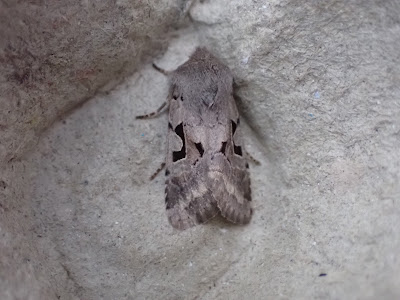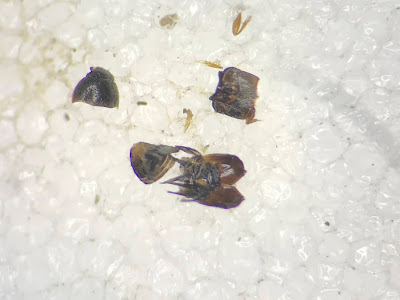A cold and damp Sunday during a pandemic lockdown doesn't leave one with many options for things to do. After a baltic walk around the village and surrounding fields with the family I sat down and had a look through the box of unidentified beetles in the comfort of a slightly warmer room.
This box is mainly populated with some of the more difficult groups such as Cryptophagus and aleochs. Groups where I'm just not confident in putting a name to the thing. The plan (sort of) is to build up a collection so that I can start comparing specimens to try and elucidate some of the finer features.
Whilst casting my eye over the box (well 3 boxes if I'm being entirely honest) I found this Amara specimen from a visit to coastal Cumbria from May 2018. That had been looked at and returned to the box on a couple of occasions since I collected it. Feeling far more confident with this genus these days, I naively assumed that today would be the day that I would put a name to it.
First couplet asks whether there is a pore puncture at the base of the scutellar stria. This can sometimes be a tricky thing to see but as with many things it's usually a case of if you're not sure, then there isn't one. However, sometimes the hair that sits there has broken off to add another layer of complexity. I took a look at this one, then another look. I couldn't see a hair but there was an obvious pit. So surely that's the thing I'm looking for..... I think. (Note not listening to previous advice).
That then took to me to look at whether the largest spur on the front tarsus was a single point or three-pronged (although often only 2 can be seen at any one time). My one had an obvious single point (the bit just above it in the pic is actually a separate spur not a prong). Easy.
There then comes a couplet about the antenna. Entirely pale OR first 3 segments pale and rest darker. Easy to see below that it's definitely the latter.
Next up I need to look at the legs. All pale (and a small beetle 5.7mm) OR with at least the femora darker? This beetle is 7.8mm and the femora are black and even the tarsi are a dark red, so we can rule
A. anthobia out.
Pronotal fovea are the dimples along the bottom and to the side of the pronotum. These vary a lot between
Amara species and can be an important ID feature. At this point though I was looking for a distinct longitudinal groove. Nothing doing.
So that took me not to a couplet but to a quartet, ie 4 possibilities. And 4 difficult to distinguish species, 2 common, 2 rare. However, the fact that the hair in the hind corner of the pronotum was much nearer to the bottom than side was making me suspect that I had one of the rare ones. So I decided to get clarification on the Facebook group.
Long story, short. I should have listened to my initial advice. If you're not sure if you have a scutellar pore then there isn't one. I had only gone and keyed it the wrong way. There is no pore. Keying it the right way got me quickly to A. communis, one of the common ones.
Bloody Amara!










































